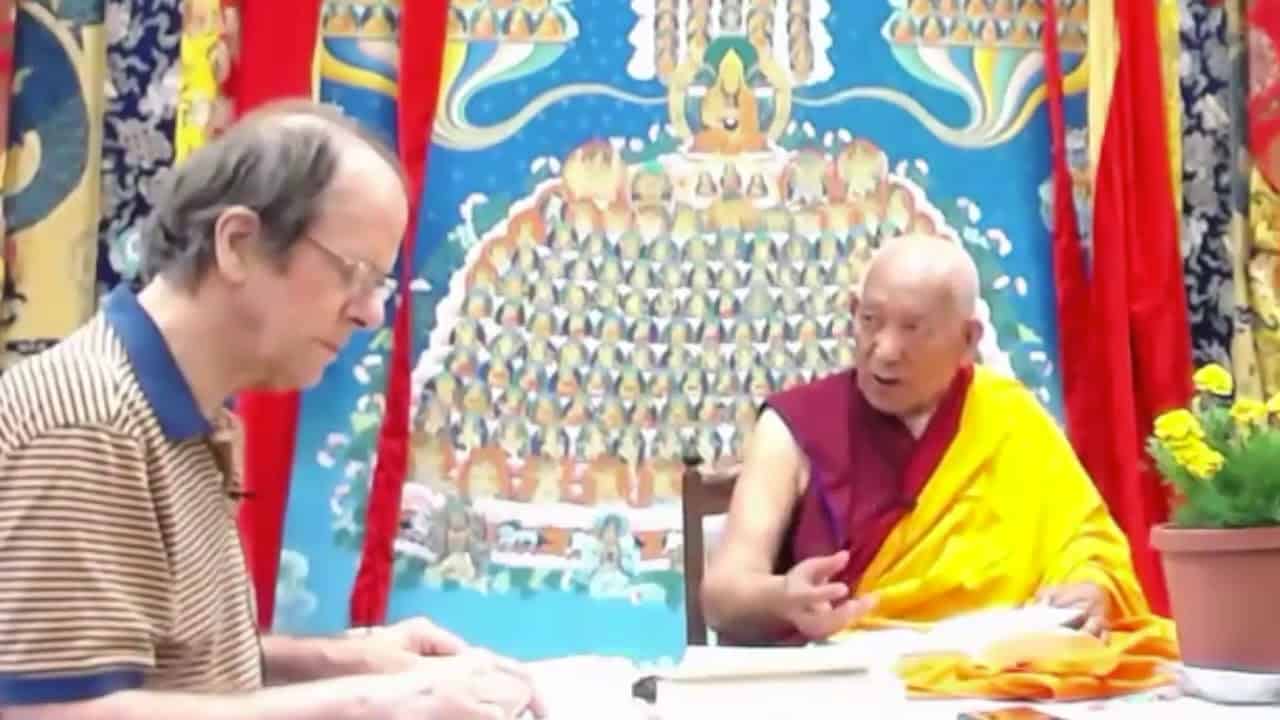The joy of monastic discipline
These verses are offered by His Holiness the Fourteenth Dalai Lama, who states "To express in a brief way my respect for monastic discipline, I would like to share with you some verses I wrote in 1973, 'The Joy of Prātimokṣa Discipline.'" (The following is a condensed version of the original.)
We fortunate ones who follow
our supreme teacher, the Impeccable One:
it is becoming for us to engage with pure faith
in uncompromised ethical conduct.Externally pure, internally pure,
beneficial and joyful, both here and beyond,
medicine for both self and others,
marvelous! We have met the Buddha’s Way!Though difficult, we have encountered it this once;
those who seize it are even fewer.
With firm determination in our hearts,
observe pure conduct by all means possible.Beyond doubt, this discipline subdues
the extremely coarse afflictions;
even the duḥkha natural to householders’ lives—
what need to mention that this discipline eases that, too?The supreme mind of bodhicitta—
the lifeline of the bodhisattva path—
concentrations such as the union of serenity and insight,
and so forth:
what escapes being produced by this discipline?The wondrous and marvelous
profound path of tantra,
the method to realize selflessness with the subtlest level of mind:
that, too, is founded on this discipline.The state of a buddha,
the inseparable union of compassion and emptiness,
emaho! the swiftest path leading to it.
That, too, relies on this discipline for its cause.Therefore, O intelligent friends,
do not disparage or treat as trivial
the prātimokṣa ethical discipline,
which originates in the śrāvaka’s scriptures.Know that the discipline is praised
as the basis and root of the doctrine.
Strive to follow it well, supported by study and analysis,
with mindfulness, introspective awareness, and conscientiousness.Guard well with utmost striving,
with personal integrity and due respect;
do not give in to indifference and indolence,
lest you should squander the very root of steadfast well-being.
The Joy of Prātimokṣa Discipline
- Text by His Holiness the Dalai Lama.
- Audio version chanted by Stephen Taul, a student of Venerable Thubten Chodron.
The Joy of Monastic Discipline (download)
Featured image of His Holiness by DalaiLama.com / Tenzin Choejor.
His Holiness the Dalai Lama
His Holiness the 14th Dalai Lama, Tenzin Gyatso, is the spiritual leader of Tibet. He was born on July 6, 1935, to a farming family, in a small hamlet located in Taktser, Amdo, northeastern Tibet. At the very young age of two, he was recognized as the reincarnation of the previous 13th Dalai Lama, Thubten Gyatso. The Dalai Lamas are believed to be manifestations of Avalokiteshvara or Chenrezig, the Bodhisattva of Compassion and the patron saint of Tibet. Bodhisattvas are believed to be enlightened beings who have postponed their own nirvana and chosen to take rebirth in order to serve humanity. His Holiness the Dalai Lama is a man of peace. In 1989 he was awarded the Nobel Peace Prize for his non-violent struggle for the liberation of Tibet. He has consistently advocated policies of non-violence, even in the face of extreme aggression. He also became the first Nobel Laureate to be recognized for his concern for global environmental problems. His Holiness has traveled to more than 67 countries spanning 6 continents. He has received over 150 awards, honorary doctorates, prizes, etc., in recognition of his message of peace, non-violence, inter-religious understanding, universal responsibility and compassion. He has also authored or co-authored more than 110 books. His Holiness has held dialogues with heads of different religions and participated in many events promoting inter-religious harmony and understanding. Since the mid-1980’s, His Holiness has begun a dialogue with modern scientists, mainly in the fields of psychology, neurobiology, quantum physics and cosmology. This has led to a historic collaboration between Buddhist monks and world-renowned scientists in trying to help individuals achieve peace of mind. (Source: dalailama.com. Photo by Jamyang Dorjee)


